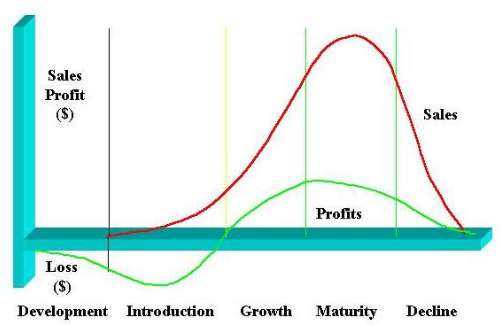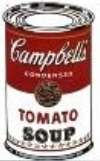|
I. Market Segmentation
Segmenting Consumer Markets
| Multiple
- any combination of one or more of the above |
| It can be difficult to separate the
different variables on which Marketers segment markets. In which
quadrant is your Marketing Plan product?
|
 |
Exercise
Segmenting Variables |
It can
be difficult to separate the different variables on which
Marketers segment markets. Which quadrant is best for your
Marketing Plan product (or is it "multiple")?
Post your answer in the
Moodle Discussion Group. |
|
Segmenting Business Markets
 |
Exercise
Business Segments I |
List
some "Operating Characteristics" of businesses
on which a marketer might segment in doing B2B marketing.
Post your answer in the
Moodle Discussion Group. |
|
 |
Exercise
Business Segments 2 |
List
some "Purchasing Approaches" of businesses on
which a marketer might segment in doing B2B marketing.
Post your answer in the
Moodle Discussion Group. |
|
 |
Exercise
Business Segments 3 |
List
some "Situational Factors" of businesses on
which a marketer might segment in doing B2B marketing.
Post your answer in the
Moodle Discussion Group. |
|
Segmenting International Markets
Inter-Market
Segmentation
Customers with similar needs but located in different
geographical areas |
Requirements for Effective
Segmentation
This is one of the more difficult concepts in
Marketing and one of the most important. As you look at these terms here and in your textbook, think
about your planned target market for your Marketing Plan Product.
 |
Exercise:
Plan
Effective Segmentation |
Give
specific examples that justify your choice of Target
Market for your Marketing Plan in each of these categories
(e.g.:
what demographic data do you have that indicates there
are enough of these people in the geographic area where you plan to
sell?)
Post your answer in the
Moodle Discussion Group. |
|
| Marketing
Plan Hint -
When choosing
your ONE and only one Target Market for your Marketing
Plan Assignment, a link from there will bring you back
here to consider this list of requirements for effective
segmentation. Be sure that your one chosen Target Market
meets as many as possible of these requirements. |
II.
Market Targeting
Evaluating Market Segments
 |
This is part of marketing strategy -- evaluating
business opportunities in the context of what resources we have to
commit and what we want to do. It links directly to Strategy. |
Selecting Target Segments
Undifferentiated Marketing
(Mass Marketing) |
 |
Focuses on what consumers
have in common rather than what's different. The original
Coca-Cola was marketed to everyone. |
Differentiated Marketing
(Segmented Marketing) |
 |
Prepares many separate
offerings for many different markets. Coca-Cola today
offers dozens of different kinds of coke, including this
one that I drank safely when I was pregnant - no caffeine,
no sugar. |
Concentrated Marketing
(Niche Marketing)
|

|
A product for
one small group. The drink
Clearly Canadian
is aimed at a very small target market.
|
Micro Marketing
(Local or Individual Marketing)
|
 |
One special bottled drink
for one special person or group. A soft drink manufacturer might bottle a
drink in a special memorial bottle for a local high school
to sell at a fund-raising event. This would be
micro-marketing. |
 |
One of my favourite
products, and one targeted to a very small niche: a Mescal
lollipop that I bought in a store at the Baltimore, Maryland
airport while travelling to a conference. Mescal is a Mexican
booze strong enough to take the hide off an elephant, and a true
test of your macho/a character is to be able to drink the stuff in
the first place, but then, when done, to eat the worm. I have done
this, during my wild days in West Texas.
What really gets to me about this product
is that, while the target market is obviously unconcerned
enough about their health that they would eat a worm, they are
health-conscious enough to want the lollipop that contains it to
be SUGAR-FREE! |
More on Levels of Market Segmentation
|
Mass Marketing |
 |
Henry Ford offered any colour
"as long as it's black" |
Undifferentiated |
| Segment Marketing |
 |
GM offers a different kind of
car for all kinds of different people |
Differentiated |
| Niche Marketing
|

|
Ferrari is something special
for a very small special group
|
Concentrated
|
Micromarketing
- Local and Individual |
1-on-1 |
Something special just for
you, yes, just you! |
Local or Individual |
 |
A few years back, the
Business section of the Globe and
Mail ran a story about Rob Magaw, a young man
in California who makes his living washing cars.
But it's not just a living, it's a growing
business that supports four employees, and it's
not just any cars. Ron Magaw washes only red and
black cars, and he charges US$125.00. |
 |
Exercise
Ron Magaw |
Ron
Magaw is practicing Niche Marketing. What additional
services could he add to move himself into the
Micromarketing category? Be sure here to
differentiate carefully between niche marketing and
micro-marketing).
Post your answer in the
Moodle Discussion Group. |
|
Factors to Consider in Choosing a Target-Marketing
Strategy
| Resources -
what do you have at your disposal to work with? |
| Product Variability |

Life Cycle Stage
|
| Market
Variability
|
| Competition -
what are the other guys doing?
|
 |
Exercise
Target Market Strategy |
Give an
example of Product Variability, either from your
Marketing Plan or from real-life products and describe
how it would make it possible to find different segments
to which to market the product.
Post your answer in the
Moodle Discussion Group. |
|
Socially Responsible Target Marketing
| My good friend and colleague, Herb
Rotfeld, professor of Marketing at Auburn University in Alabama
recently wrote a book called Adventures in Misplaced Marketing
(2001,
Westport, Connecticut: Quorum Books). In it he
discusses issues of social conscience in the targeting of
products to specific groups: |

|
|
It is strange how targeting almost any group for these
products [cigarettes, alcohol, gambling, etc.] other than high-income
white males is criticized. A new cigarette brand aimed at office
secretaries and other low-level clerical working women is condemned for
targeting a "vulnerable" audience, as is another brand of menthols for
urban-dwelling African-Americans. A new beer appealing to low-income
black consumers generates accusations that the corporations are
attempting to commit genocide, since the beer contained a higher alcohol
content that these consumers preferred.
Of course, children should not be the targets of these
adult products. That is why people below a certain age or elderly people
with impaired judgment are called "vulnerable groups." But critics of
marketing practices also refer to adult women, African-Americans,
Hispanics and other minorities as "vulnerable groups," as if they
were children needing protection. It is odd that only possessors of pale
penises are perceived to also possess the potential to personally resist
the persuasive power of marketing promotions. Adult women should resent
someone else saying they are incapable of deciding to smoke or buy guns.
No one has ever suggested that African-Americans should be banned from
purchasing cigarettes or alcohol. ( p. 157)
|
 |
Exercise
Socially Responsible Targeting |
What are
your reactions to Herb's statement? Don't
be afraid to write what you really think; Herb signs
himself in his emails as "Iconoclast" and
writes mainly for the purpose of getting us thinking.
Post your answer in the
Moodle Discussion Group. |
|
Deciding on the Global Marketing
Program
| Standardized Marketing Mix
-----------------------------------------------Adapted Regional
Segmentation |
Given: International customers
have a wide variety of
| cultural
backgrounds, needs & wants, spending power, product
preferences, shopping patterns |
|
| Too much adaptation raises costs
and dilutes global brand power |
More standardization results in:
lower production, distribution, marketing, & management costs
higher quality & more reliable products at lower prices |
| Recommended: Adapt products/marketing only when
local wants can't be changed |
III. Differentiation and
Positioning
Positioning is something that you do in the mind of the
consumer; so say Jack Trout and Al Ries in their book,
Positioning: The
Battle for Your Mind (New York. McGraw-Hill Trade, 2000.) It doesn't matter what YOU think your product is, if your market
thinks it's something else, you've got to realize that. If you sell a
light low-calorie beer and every tough-guy macho beer drinker in
Manitoba thinks it's a great heavy-weight dark ale, you'd be better
off to change your advertising and promote it as an ale
than to try to change how those guys see it.
Positioning can help you
| Find out how people see the market you're in or thinking of entering |
| Decide on the best place in that market to locate your product |
Positioning Maps
To help visualize how we will position a product, we draw
a positioning map. To make this simple, we'll do it here in two
dimensions, or attributes, of a product. Here I use the cereal market,
and the dimensions of price and sugar content. I only use two dimensions because it's
difficult to draw more than that, but recognize that complex computer
programmes can do dozens of different dimensions at once and give you the
perfect spot for your product.
Draw a horizontal line intersected in the middle by a vertical
line (ignore the line around the outside.) Label the axes -
one is Price, the other Sugar Content. It doesn't matter which is
which; here I've called the horizontal axis Price. To the left is usually less and
to the right more, the bottom less and the top more.
 StoreSugar StoreSugar |
High in Sugar
 Trix Trix
 Honeynut Honeynut
 CocoaPuff CocoaPuff
|
|
Low
Price
 StoreHealth StoreHealth
 Quaker
Oats Quaker
Oats
|
High Price
 Wheaties Wheaties
 SpecialK SpecialK
Low in Sugar
 Cheerios Cheerios
 Z Z |
|
Think about cereals - where do you put something like Trix?
(their advertising slogan, "Silly
rabbit, Trix is for kids" will tell you). Upper
Right Quadrant. High in sugar and expensive, as
most brand-name cereals are (and with less nutrition than a shot of
whiskey, a 1960's study showed). We can put Cocoa Puffs and Honeynut
Cheerios here too; there are a large
number of cereals in this quadrant; I've drawn only three.
|
|
Think now of Kellogg's Special K, high in protein, low in fat, blah blah
blah (advertising claims) - made for the adult market, still a brand
name and fairly expensive. Place it to the right on the horizontal line (higher in cost)
but further down on
the vertical line (low in sugar). Lower
Right Quadrant. Again, there
are lots of cereals here, given the whole health-food and dieting
craze of North America.
Think of that little health food shop on Eglinton Avenue that smells
like herbal tea and licorice and sells their own brand of health-food
cereal that costs $14.59 for a 100 gram box. Call it CerealZ and put
it right down there
in the far right lower corner as far as you can go. Way low in sugar,
way way high in price. Remember that while you're putting these brands
in place, you're thinking about where you'll put (position) your
cereal.
|
|
In the Upper
Left Quadrant there will
be some house and store brands of sugary
kid's stuff, not too expensive. In the Lower
Left Quadrant are less expensive brands of health-conscious cereal, and the
inexpensive old standbys like Quaker Oats oatmeal. Then
imagine this map with another two dozen brands of cereal on it. Imagine it with 7 other
dimensions jutting out into space.
|
|
You can do two things with a
positioning map. First - you can
use it to understand where customers
"position" your product in the market. Maybe you do some market research and
find out that people think your cereal is an expensive low-calorie
health-food cereal down there in the lower right quadrant with
Kellogg's Special K and the little health-food's Z Cereal. Maybe
that's where you wish it were seen but your research points out that
most people see it as a cheap imitation health food cereal in the
lower left quadrant. Of paramount importance is what the
consumer thinks. It doesn't matter where you think your precious
cereal belongs. Where does the customer see it? Once you know this,
you may want to either change your marketing strategy to try to
convince the market of just what your cereal is, or (easier) you may
want to change your product or your marketing to conform to what the
market thinks it is.
|
|
But you are introducing a new
product, and here's the Second
thing you can do with a positioning map.
You want to know where there's a gap, a part of the market whose needs
aren't being fulfilled.
Look at the map; are there empty areas on the map? There always should be
and when there are there's a reason.
Don't be fooled by a positioning map with a gap in it into thinking that all the idiots
out there have missed the obvious market segment to go after. If you
are charting price and quality, there won't
be many products in the quadrant of high price-low quality and you'd
be a fool to set out to sell a product in that category.
Look for a place where there aren't as many products and there won't be as
much competition there, but be sure it is a place where you want to
go. This is positioning. Deciding where, in the group of competitors for
the
market for your product class, your new product will have the best
chance of
success. |
 |
Exercise
Positioning Cereal |
Looking
at the positioning map above for breakfast cereal, where
does your favourite cereal belong?
Post your answer in the
Moodle Discussion Group. |
|
Choosing A Differentiation and Positioning Strategy
In the positioning task, the important thing in the real world is to know what
dimensions of your product are most important to the consumer and to concentrate on those. A positioning map with
price and quality is obvious; try to think of one that
is particular to your product class. Don't waste time on unrealistic strategies -- we'll make the
highest quality thingamajig
and sell it at rock bottom prices. Think realistically. Below are some
common dimensions for some common consumer products.
Shampoo
dandruff control - harsh or light
perfume level
conditioner included or not
|
 |
Beer
high or low calorie
dark or light
domestic or imported
brand name or store brand |
 |
Watch
sporty versus dress
gadget-ridden or simplicity itself
level
of
accuracy
(does a 3-year-old need
a watch accurate to a millisecond?) |
 |
Furniture
sturdy, long lasting
antique or contemporary
heavy or light
service level
delivery options |
 |
Dog beds
warmth, portability, ease of washing
price may not be a particularly important variable -
how much is the doting owner willing to pay? |
 |
 |
Exercise
Positioning Dimensions |
For one
of these product classes, choose an example of an actual
product and describe what the dimensions mean for
someone purchasing it.
Post your answer in the
Moodle Discussion Group. |
|
| Marketing
Plan Hint -
When
establishing your company's positioning in your Marketing
Plan Assignment, a link from there will bring you back
here to consider the material on positioning. Take care
with this part; it is an extremely important part of
Marketing. |
Identifying Possible Competitive
Advantages
Product
Differentiation
features, performance, style &
design, attributes
|
 |
Service Differentiation
delivery, installation, repair,
customer training
|
 |
Channel Differentiation
offering goods and services in more convenient
places
|
 |
People Differentiation
hiring & training better people than
competitors do
|
 |
Image Differentiation
symbols, characters
|
 
|
 |
Exercise:
Plan
Differentiation |
On which
of these competitive advantages will you position your Marketing Plan product in the market
and why?
Post your answer in the
Moodle Discussion Group. |
|
Choosing the Right Competitive Advantages
| How many
and which differences to promote |
 |
Exercise:
Plan
Criteria |
State
which of these criteria above your product meets, and
explain why.
Post your answer in the
Moodle Discussion Group. |
|
Selecting an Overall Positioning
Strategy
 |
Exercise:
Plan
Value Propositions |
What
Value Proposition does your Marketing Plan product offer
to your target market? Explain.
Post your answer in the
Moodle Discussion Group. |
|
Communication and Delivering
the Chosen
Position
Perhaps the most important point here is that if you
decide to position your product on a particular dimension
or attribute, be sure you can deliver. If you're going to
offer the fastest grocery delivery for Internet shopping
in the city, be sure you ARE fast. There is an old adage
in marketing that says you can use false advertising but
not for very long. People quickly find out if you do what
you say you will, and word-of-mouth works faster than any
other kind of promotion. To properly communicate and
deliver a chosen position:
Pulling It All Together
All these topics in Marketing relate to each other.
You can't do strategy without knowing about positioning and you can't
position your product if you don't know what market you are targeting or
what level of segmentation you will pursue.
 |
Exercise:
Lab
Pulling it Together |
Watch
for an ad for a product you like on TV. Watch the ad
closely, thinking about who it's targeted at and how
it's positioned. Then watch for ads for its closest
competitors (e.g.: if you are
looking at Head and Shoulders shampoo ads, then watch
for other shampoo ads such as Clairol Herbal Essence).
On what "dimensions" does your product differ
from those of one of its competitors? (e.g.:
H&S is sold as a dandruff control shampoo whereas
Clairol Herbal Essence is sold as a satisfying sexual
experience).
Post your answer in the
Moodle Discussion Group.
|
|
|